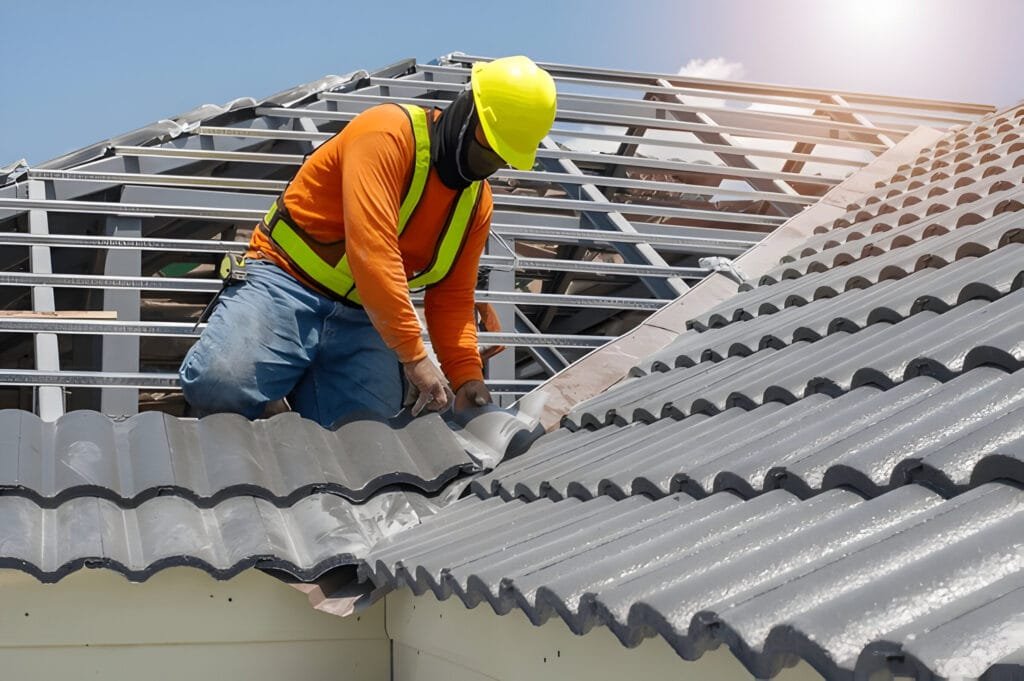The roof shields your house from environmental conditions, and no matter how well it has been installed, it will age with time and develop some issues. If there are problems, then the question is whether or not the roof must be repaired or replaced completely. The decision-making process involves a thorough analysis of the status of the roof, its age, and the level of the required repairs. We will be discussing in this blog how you can identify whether you need to repair or replace roof.
Roof Repair vs. Replacement
1. How Old is Your Roof?
The amount of work required in repairing the roof and the age of the roof determine whether repair is enough or whether one needs to replace the roof. All types of roofing materials come with an expected life, and once your roofing is close to, or even past, that time, most repairs are just stop-gap measures.
- Different types of shingles are used depending on the geographical area, but asphalt shingles normally have a lifespan of 20–25 years.
- Metal roofs can last for between 40 and 70 years.
- The tiles and slate are able to provide the longest life span, in that they can last up to 50 years or even more.
When to Consider Replacement: If you have a shingle roof that has reached the expected lifespan, the roofing material will wear out soon, and continuous repair will be expensive.
When Repair May Be Sufficient: In a situation where your roof is still very young, yet there is some damage that is not catastrophic, these repairs will be able to serve you for a while longer without having to replace the roof completely.
2. Extent of Damage
The size and the extent of the natural disaster also remain important factors as far as the decision is concerned. Cosmetic damages can be easily treated by repair work, but in more severe cases they have to be replaced completely.
- Minor Damage: Small portions of the shingles that may have been damaged or completely missing, a few leakages that would affect a given part of the roof, or storms that may have affected a particular part of the roof can be resolved in most cases.
- Major Damage: If some area of the roof is substantially damaged, there is water damage on the roof, or the structure of the roof is somehow affected, then replacement becomes inevitable.
When to Consider Replacement: Every time the situation degrades the roof to the extent that more than 30 percent of the roof is destroyed, it will be cheaper to replace the roof rather than make minor repairs.
When Repair May Be Sufficient: Minor concerns such as a few shingles that may be missing or minor leaks can be repaired, and they do not have to necessitate a complete roof replacement.
3. Leaks and Water Damage
This means that roof leaks are among the top reasons for repair or replacement, but the level of damage caused by the leak determines such a decision. If the water has inflicted heavy damage to your home’s interior and framework, it may be wiser to replace the roof.
When to Consider Replacement: If your roof deals with perennial leaks and literally none of the repair efforts were able to solve the problem, you need a new roof. Severe losses in the form of water struggling to the insulation, the ceiling, or wall surfaces provide a very strong signal that the structure’s roof may have been compromised.
When Repair May Be Sufficient: It can be said that if the leakage shows some specific area and has not affected most of the roof or caused a significant amount of damage, then a simple repair work is sufficient to stop the leakage and also stabilize the roof.
4. Roof Deck Condition
Another critical factor that has to be checked is the structure of the roof deck, for it is the base on which the roofs are placed. This means that if there is an issue with the roof deck, repair work cannot help since there will always be a problem.
When to Consider Replacement: If the roof deck is cracked, bending or decaying in any way that will compromise the structure of the house, then it is the right time to replace it. Putting on a new roofing system over a worn-out deck can cause more problems as well as more costs of repairs in the future.
When Repair May Be Sufficient: If the roofing structure of the roof deck is still strong with the need for only a new surface to be installed, including shingles or flashing, then it is preferred choosing roof repair.
5. Energy Efficiency Concerns
Your roof plays a role in insulation and air circulation, thus helping your home to conserve energy. A house with old or worn-out roofing can end up paying a lot of money to heat each winter or cool each summer since the roof conducts heat in and out of the home improperly.
When to Consider Replacement: In particular, it is possible to save on money in the long term if your roof is old or it is made of materials that harm the energy efficiency of the house. Replacing with an energy-efficient type can also improve your home’s comfort and reduce the effect on the environment.
When Repair May Be Sufficient: In homes that do not have aging roofs, minor problems such as your insulation or vents can be fixed within certain areas rather than having to re-do your entire roofing system.
6. Cost Considerations
Some of the main factors that dictate whether one has to repair or replace a roof are the cost. The problem arises; for instance, repairs might appear cheaper in the short run only to realize that the house requires constant repair work. Whereas, replacement is much more expensive in the beginning when compared to other expenses of repair and energy.
When to Consider Replacement: If you constantly deal with the check for roof damages, then it is better to go for a full roof replacement. Even though it will be slightly costly in the beginning, it can spare one from the same expenses and give one the security of not having to worry about the issues.
When Repair May Be Sufficient: If the shakes or shingles on your roof require only simple repairs and other parts of your roof remain solid, then repairs are an affordable option that will not require a roof replacement.










